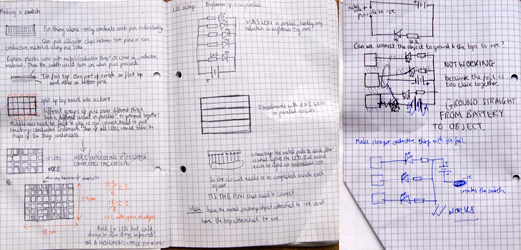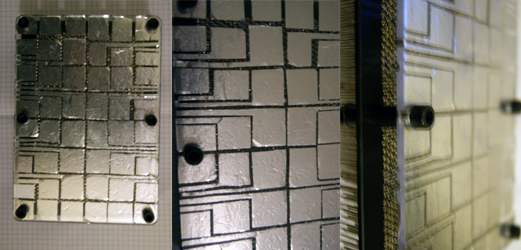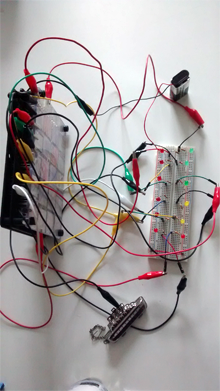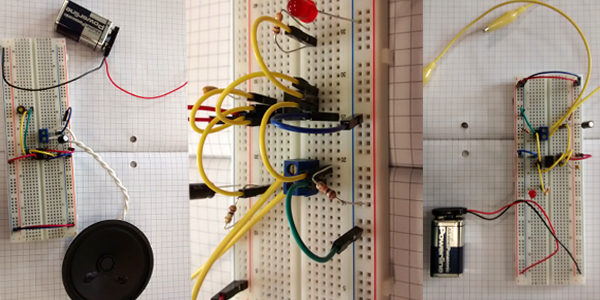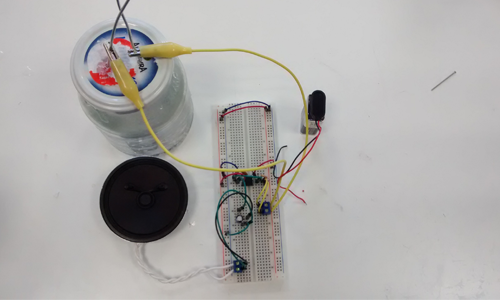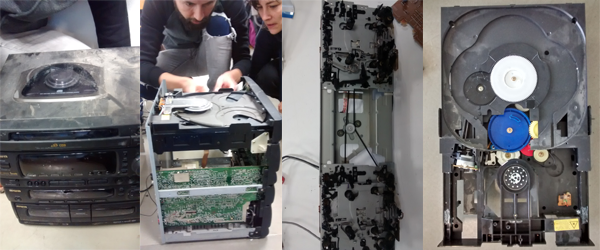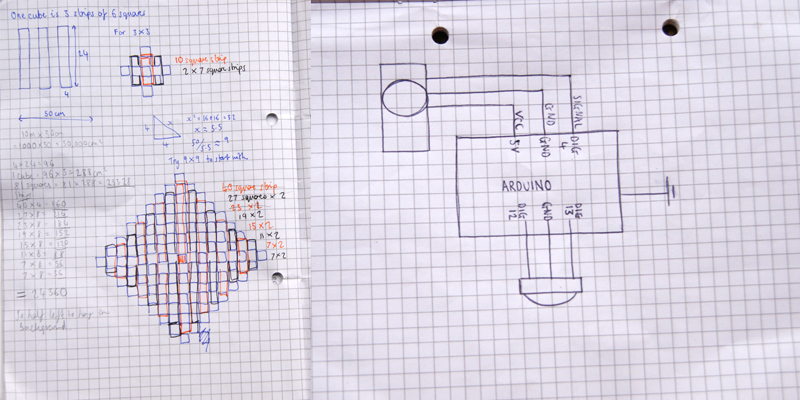No edit summary |
No edit summary |
||
| (One intermediate revision by the same user not shown) | |||
| Line 1: | Line 1: | ||
'''The Improbable Switch''' | |||
I wanted to use an old pin toy as a switch. For this, I decided to make a conductive panel with multiple parallel circuits, lighting up different LEDs for each point of contact. | |||
[[File:Teatanic3.png]] | |||
[[File:Teatanic2.png]] | |||
[[File:Teatanic4.png]] | |||
[[File:Teatanic1.png]] | |||
'''Home made variable resistor''' | '''Home made variable resistor''' | ||
| Line 6: | Line 23: | ||
[[File:Variableresistor1.png]] | [[File:Variableresistor1.png]] | ||
'''Final Project''' | '''Final Project''' | ||
Beginnings - Disassembling an old stereo system and finding some interesting parts. We particularly liked the movement generated by the various motors, cogs and rubber bands controlling the CD player and the tape deck. | Beginnings - Disassembling an old stereo system and finding some interesting parts. We particularly liked the movement generated by the various motors, cogs and rubber bands controlling the CD player and the tape deck. | ||
| Line 17: | Line 37: | ||
Experimenting with controlling this motion using various sensors (photo cell, audio jack) alongside a relay. Sending a signal to the relay would cause the motors to change direction and make the CD tray ‘dance’. | Experimenting with controlling this motion using various sensors (photo cell, audio jack) alongside a relay. Sending a signal to the relay would cause the motors to change direction and make the CD tray ‘dance’. | ||
[https://vimeo.com/149415931 video] | |||
Latest revision as of 16:31, 18 December 2015
The Improbable Switch
I wanted to use an old pin toy as a switch. For this, I decided to make a conductive panel with multiple parallel circuits, lighting up different LEDs for each point of contact.
Home made variable resistor
An attempt to make ‘permanent salt’. Noticing that, upon adding different amounts of salt to a solution, I could alter the resistance of a circuit and therefore make different sounds, but that after some time this effect lessened as the salt dissolved, I tried to make a non-soluble equivalent. Using shredded tin foil, I placed hundreds of tiny conductive pieces of metal into the dissolved salt solution. When shaken, the effect of collisions would cause the circuit to make different sounds.
Final Project
Beginnings - Disassembling an old stereo system and finding some interesting parts. We particularly liked the movement generated by the various motors, cogs and rubber bands controlling the CD player and the tape deck.
Experimenting with controlling this motion using various sensors (photo cell, audio jack) alongside a relay. Sending a signal to the relay would cause the motors to change direction and make the CD tray ‘dance’.
Wanting to continue with sensor controlled motion, we looked into paper mechanics. After some initial tests, it became clear that we needed a lot of control over the motor in order to preserve the paper. Therefore we replaced the relay with a servo motor and used an Arduino to set the style of motion. We also decided to use an Infra-red sensor so that our mechanism could be triggered by movement.
